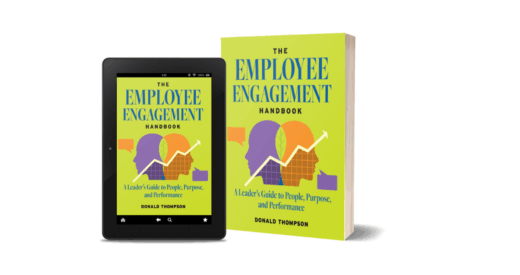Building an inclusive hiring strategy is a crucial step in creating a more diverse, welcoming, and productive work environment. But, if you want to empower your new recruits to perform at their best and ensure they’ll stick around to be part of your organization for the long haul, it’s just as paramount that you integrate equity and inclusion in your onboarding processes.
We recommend the following steps to leaders, DEI professionals, and Human Resource employees who are tasked with onboarding for new hires.
1. Prepare Your Team
The addition of new employees may change the dynamics of workplace teams, departments, and depending on the size of your company, perhaps even the entire organization. Be open in communicating with existing team members about how the new hire will contribute to the organization. Set clear expectations about who they will work with and report to, what their responsibilities are, whether they’ll be taking on anyone else’s work, and what that handoff process will look like.
Pay special attention to this initial step if your office operates on a remote or hybrid model, as new employees can easily fall through the cracks without getting to know their coworkers or becoming a part of the larger culture. To guard against that pitfall, identify potential mentors and/or sponsors within your company who may be able to provide initial support to new recruits. Also, if you have them, be sure to connect new employees with leaders from employee resource groups (ERGs) and/or business resource groups (BRGs) so they can learn more about the groups that are available and begin taking part.
2. Take a Proactive Approach
Starting a new job can be a meaningful, important, and sometimes nerve-wracking experience for many people, which is why it’s important to communicate expectations and schedules to new hires well ahead of time. Prior to their first day on the job, reach out via email to share helpful information, including what they should bring, what to expect, and how people dress at the office.
If your office is remote or runs on a hybrid model, help new hires get set up and familiarized with any digital communication platforms that you use. If you’re in a physical workplace, describe where the office is located, specifically how to navigate the building, and the type of equipment that will be provided.
New hires are often nervous, so think about the small steps that will set them up for success. Will they need an ID card? What will their work area look like? And, is parking provided on site? Answering these questions ahead of time helps clear the path for your new colleagues to do great work from day one and creates a nurturing environment that workers value.
Ask employees to communicate their own expectations and needs in return. Create and communicate a clear and simple method for people to request accommodations by letting them know that your organization is fully committed to ADA-compliance, to disability inclusion, and to inclusion at large; and that you’re happy to provide the tools and changes they need in order to do the job best, including workspace modification, assistive technology devices, accessible parking, and more. By using this type of general language when talking about equipping new hires, you open the door for people to ask for the workplace accommodations they need, whether those accommodations are due to diagnosed disability, potential forms of neurodiversity, invisible illness, or more.
Build an onboarding checklist that you can send to new employees before their start date, and if you can, give them ample space and time throughout the first week to learn new processes and procedures. Sharing key details in advance will help promote a smooth, low-stress transition, and moving slowly through these first key moments will help you move more quickly later on.
3. Keep it Personal
Many companies rely on the same surveys and template emails for onboarding every hire. This impersonal process can leave new employees feeling overwhelmed and disconnected, especially if it works in combination with lots of paperwork and long information sessions that provide little context for the new employee or their future work. Our recommendation? Ditch the standardized procedures in favor of a welcoming and individualized onboarding experience when you can.
To start, ask yourself which pieces of the process absolutely need to be uniform and where you might instead infuse personality and warmth into the process. For instance, rather than sending your new hire a pre-written, standardized welcome email, greet them at their desk (or with a 9 a.m. virtual meeting) that includes a warm introduction and perhaps a small first-day gift. Schedule introductory meetings with new hires, their teammates, and their supervisors in the first week, and ensure all written communication is personalized and friendly.
4. Highlight Your Commitment to DEI
Emphasize your company’s commitment to diversity, equity, and inclusion (DEI) throughout the onboarding process. Talk about what it means to you, what your organization is currently doing to further its DEI goals, and what you hope to accomplish in the future. Even if your organization is just getting started on its DEI journey, explaining what you all have done so far and general goals for the near-term future will make it clear to all employees that you understand the importance of inclusion. Inform new hires about affinity groups within your organization (like ERGs and BRGs), and share other ways to get involved with company-wide DEI initiatives.
Also, pay special attention to the accessibility of your onboarding materials. When necessary, adjust your type of communication. For example, some people with forms of neurodiversity learn best through written communication, while others learn best through face-to-face conversation.
The Americans with Disability Act (ADA) requires that all emails, videos, presentations, employee manuals, hiring systems, and onboarding documents are fully accessible, yet many employers still fall short on this requirement. To avoid the same error, make sure your printed onboarding materials are available in accessible formats (like large, Sans Serif font or Braille) when needed, include closed captions on all audio and video materials, and enable live captioning on virtual meetings. Leading with your commitment to values of diversity, equity, and inclusion signals to new employees that your office is a place where they can be their unique selves.
5. Maintain Ongoing Communication
The onboarding process shouldn’t end on the first day, or even during the first week. Check in periodically with new hires to see how they are settling in, getting along with their new colleagues, and managing work responsibilities. Working in a remote or hybrid office? You can alleviate anxieties through simple – yet thoughtful – steps like scheduling bi-weekly check-ins with new recruits over video conference. Ask them if there’s anything you can do to ease the transition, and follow up promptly about any accommodations or adjustments they may need.
6. Ask for Feedback and Learn from it
Soliciting feedback from recently onboarded employees is the best way to gain valuable insights that will strengthen your orientation process in the future. When feasible, send anonymous surveys. Otherwise, simply ask new hires to evaluate the onboarding experience openly and honestly with questions like “what did you like about the onboarding process?” and “what do you think we could have done better?” Be open to candid feedback and ready to incorporate it into your onboarding strategy moving forward.






